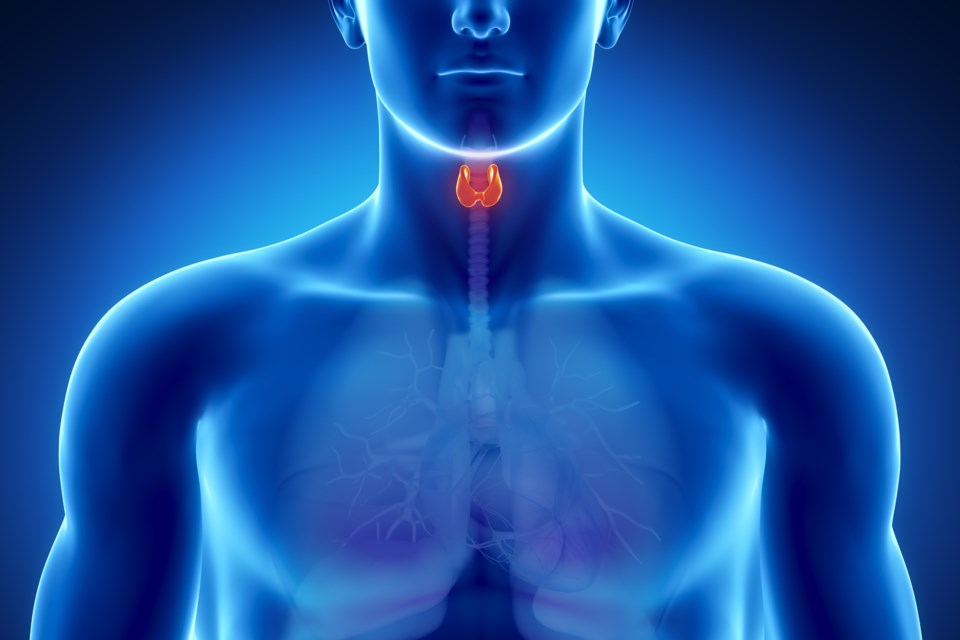There are many things in life that we take for granted in our day-to day-lives, things that we would notice if they were missing. For example, fresh water ‑ there are deadly consequences to lacking this vital fluid and unfortunately there are people in the world that know this all too well.
There are many functions that occur in our bodies that we take for granted as well, we sometimes don’t realize the significance of it until it is not functioning at 100 per cent, it’s like that bad break-up cliche “you don’t know what you’ve got till it’s gone.” This is especially true of our health and wellbeing. One of the most important ways to ensure that you live life at your healthiest is to take care of your thyroid gland. Since your thyroid is in charge of regulating so many functions in your body, it is really important to make sure that it’s in proper working order.
Responsible for secreting master metabolism hormones that control every function in your body, this butterfly-shaped gland inside of your neck is one of the largest endocrine glands. It plays a major role in metabolism, regulates many body functions by releasing hormones into the bloodstream and producing more hormones when the body needs more energy. It even has a major role in growth and maturation of the human body. Being in charge of so many bodily functions means that if it’s not in proper working order, neither are you.
Poor thyroid function leads to several health problems, which include fibromyalgia, IBS, acne and even gum disease. This makes it important to keep it functioning properly, and if it’s not, to take the appropriate steps to ensuring optimum balance with the help of a professional.
Too much or too little secretion from your thyroid equals trouble for your health, trouble that inevitably leads to thyroid diseases like hypothyroidism and hyperthyroidism. Whether minor or major symptoms, it’s a good idea to figure out what's going so you are able to take the appropriate steps to get back on the right path with your health.
Hyperthyroidism is when the thyroid produces too many hormones, speeding up metabolism and causing some of your body functions to accelerate. Symptoms associated with this disease are difficulty concentrating, frequent bowel movements and weight loss. While hypothyroidism occurs when your thyroid produces too little hormones, a condition that is often linked to iodine deficiency, these symptoms include lethargy, weight gain, dry, scaly skin and even hair loss. Both damaging to your health, both need medical attention.
Different foods have different effects on your thyroid. There are specific foods that you should avoid called cruciferous vegetables such as cabbage, kale, Brussels sprouts, broccoli and cauliflower which contain natural goitrogens, whose compounds can cause the thyroid gland to enlarge. However, it’s been reported that cooking these foods, especially Brussels sprouts, will lessen this. Other foods like gluten and soy have also been reported to wreak havoc on your thyroid and should be avoided.
Now let’s take a look some great food sources you can add to your diet to enhance the health of this very important gland:
Iodine- This is an essential thyroid ingredient for producing hormones and since the body does not make iodine, it is of most importance to get it through your food sources. You can get your fill by eating sea veggies/seaweed like kelp, dulce and nori.
Chlorophyll-Being a natural chelator, it removes toxic metals that may be interfering with thyroid function. You can get a concentrated dose from a liquid supplement form or from dark green leafy veggies.
Selenium rich foods- Selenium is also needed for the production of healthy thyroid hormones. More specifically it converts the hormone T4 into T3 which is the active thyroid hormone that will be used by your cells to set metabolic rate. You can find rich sources of selenium in Brazil nuts and seafood such as sardines, shrimp and salmon, as well as chia, sesame and flax seeds.
Kelp noodles with cilantro pesto
Kelp noodles
Cherry tomatoes
1.Rinse kelp noodles well and submerge in warm water for 10 min and drain.
2. Cut cherry tomatoes in half
3. Mix together in a bowl
Pesto:
Juice of 3 limes
One bunch cilantro
1/2 cup cashews
1/2cup olive oil
1.Mix all ingredients in a blender or food processor, if too thick or not breaking down enough, add a bit more lime juice and or olive oil.
2.Pour pesto on Kelp noodle and tomato mixture
3.Mix all ingredients together
4.Add sea salt and pepper to garnish
5.Enjoy!



